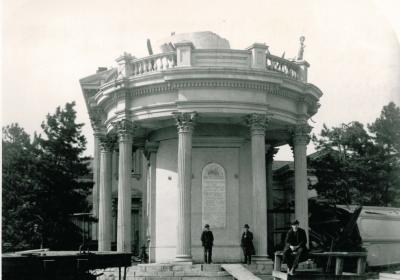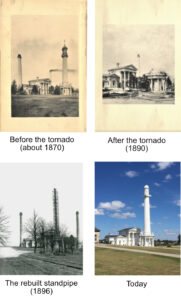 In the darkness of night, sometime around 8:30 p.m. on March 27, 1890, a cyclone struck Louisville. It travelled with amazing speed: six and a half miles in about five minutes and caused mass chaos and destruction with over 600 buildings destroyed and an estimated 76 lives lost. The tornado started just west of downtown, roared through the city, over the river to Jeffersonville, Indiana and then recrossed the river and blew down the Louisville Water Tower.
In the darkness of night, sometime around 8:30 p.m. on March 27, 1890, a cyclone struck Louisville. It travelled with amazing speed: six and a half miles in about five minutes and caused mass chaos and destruction with over 600 buildings destroyed and an estimated 76 lives lost. The tornado started just west of downtown, roared through the city, over the river to Jeffersonville, Indiana and then recrossed the river and blew down the Louisville Water Tower.
Inside the pumping station, Jonathan Wiest and C. D. Merrit watched the two Cornish pumps working at a steady beat of 8 strokes per minute. They heard the wind pick up and suddenly a “furious storm in a chorus whose piping notes were so shrill and sharp as to carry terror” hit. The windows crashed in and the heavy plungers of the Cornish pumps dropped hard. The men leapt to shut down the engines — if the plungers dropped again, they could have been destroyed.
The two men stepped outside and in the windy dark they saw the water tower was blown over and only the brick base remained. Without the tower there was no way for the pumps to work and the city might run out of water. Luckily there was enough water in the Crescent Hill Reservoir to keep water flowing into the city. To get the pumps running again, the standpipe inside the water tower was quickly rebuilt. Then nine years after the tornado, the outside of the tower was rebuilt as we see it today.
Math question! How much time did the men have to turn off the pumps before the plungers dropped again?
Answer: The pumps were running at 8 strokes per minute. A minute is 60 seconds long. 60 / 8 = 7 ½ seconds. Luckily, Wiest and Merrit were where they needed to be, or the city could have run out of water.


